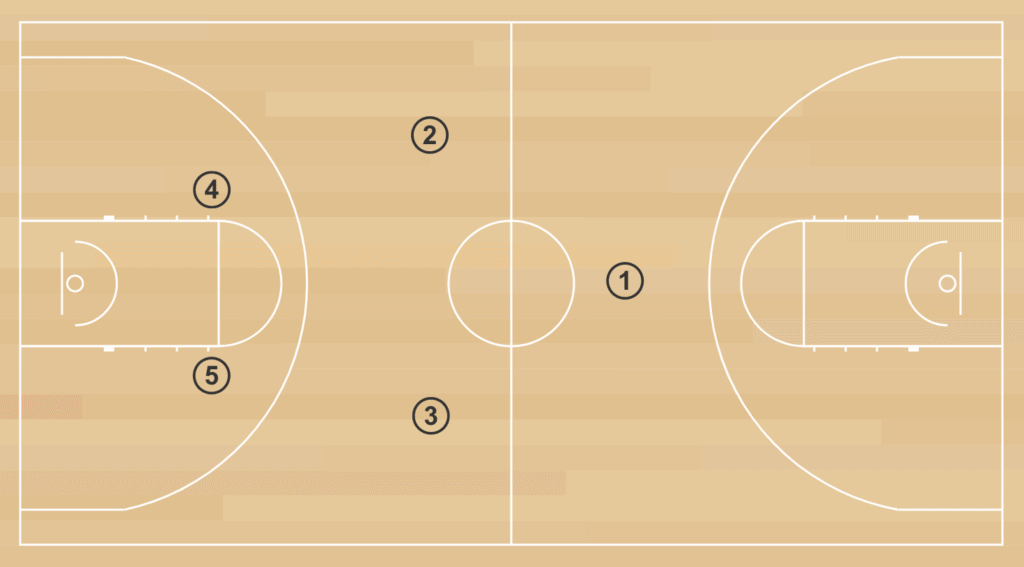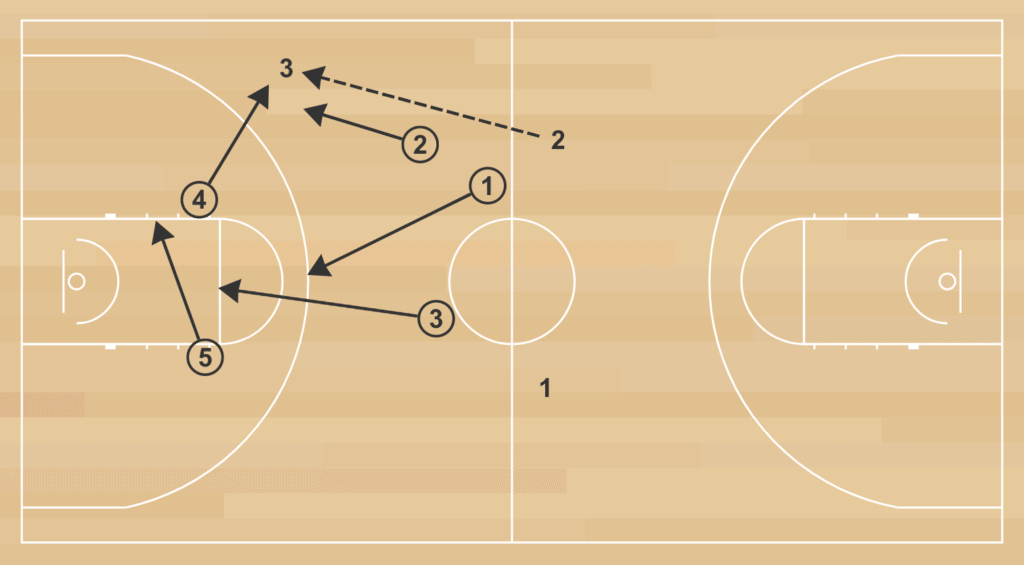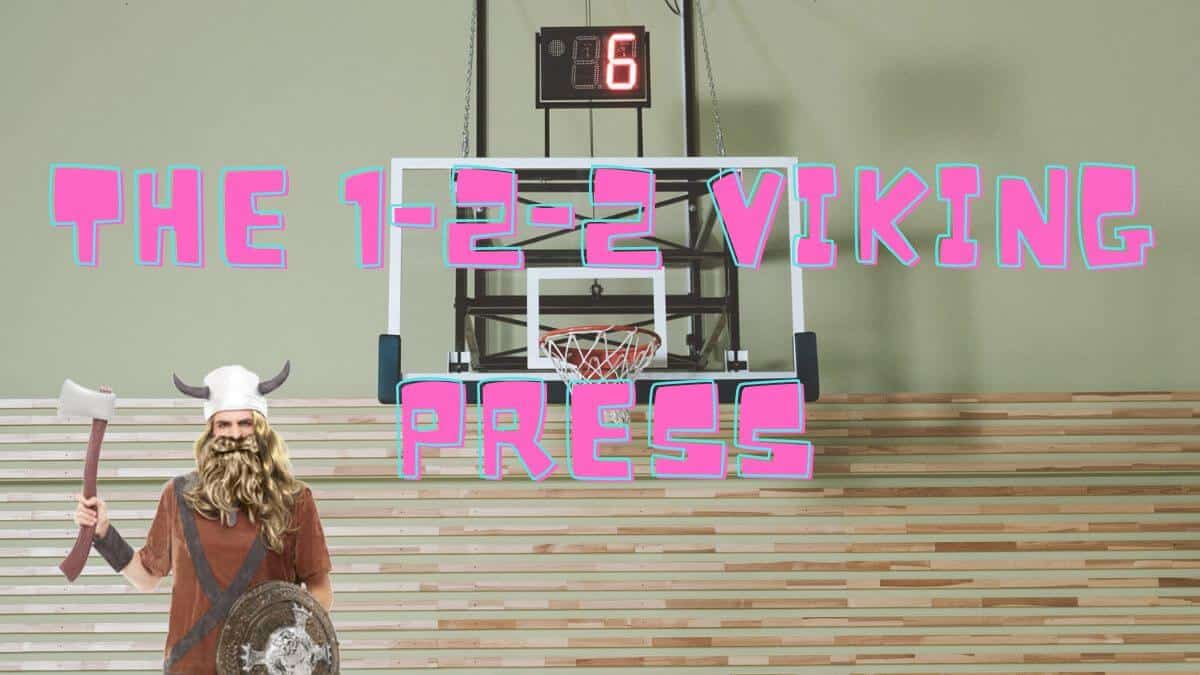The 1-2-2 Half Court Viking Press is one of the most effective defensive strategies in basketball. It is essentially a 2-3 zone defense that combines a variety of unique elements to create a formidable wall that can stifle even the most skilled offensive teams. The press utilizes a combination of pressure, rebounding, and ball-control to keep opponents from getting any easy shots or easy breaks. It is a powerful tool that can be used to improve a team’s defensive ability and help them achieve their goals.
The 1-2-2 Half Court Viking Press is an advanced defensive strategy that requires a well-developed understanding of the game. It requires a team to work together in order to effectively execute the press. All five players must be in sync in order to effectively utilize the press and generate turnovers. Each player must be aware of their positioning, the positioning of their teammates, and the positioning of their opponents. Furthermore, they must be able to react quickly to any changes in the offensive’s attack and adjust their positioning accordingly. With practice, the 1-2-2 half court viking Press can become a devastating defensive weapon.
In this post, we’ll explore the 1-2-2 half court viking press in detail. We’ll also provide some tips and tricks for improving your team’s ability to handle the Viking press on both sides of the floor. By the end of this post, you should have a solid understanding of this press and the confidence to implement it in your own playbook.
Implementation of the 1-2-2 Half Court Viking Press
Initial Formation
This formation is an intimidating presence on the court. Technically, it’s more of a 3/4 court setup, but the point drops back pretty quickly and the formation capitalizes on some half court trapping strategies.

So your point defender hops out and starts pressuring the offense to one side. The wings are hanging out just behind half court. You want the offense to feel nice and comfy crossing half court, as long as it’s towards the sidelines. The posts start off near the top of the key.
Roles
Point Guard
The point guard is the player who initiates the 1-2-2 half court viking press and is the primary ball handler. They must have good court vision and be able to quickly pass the ball to other players in order to keep the press going. They must also be able to dribble past defenders and be able to quickly transition from defense to offense.
The Posts
The center is primarily responsible for defending the middle of the court, and is the key player in the 1-2-2 half court viking press. They must be able to quickly rotate and help other players defend their assigned areas and be able to effectively pressure the ball. The center should be able to disrupt the opposing team’s offense and create turnovers by using their size and strength to block passing lanes and disrupt the opposing team’s rhythm.
The Wings
The shooting guard is the player who is responsible for defending the wing area of the court. They must be able to contain the ball handler and be able to quickly rotate to other areas of the court as needed. They must also be able to apply pressure and be able to quickly move to the opposing team’s basket to help prevent any easy shots.
Rotations
The classic rotations here are actually fairly simple. With the viking press, the formation has a tendency to simply follow the ball until there’s penetration. Once the offense breaches this press, you’ll probably want to fall back to a man-to-man or a true half court coverage.
But when the ball goes to a wing, we’re still holding strong. Let’s look at that option.
Ball to the Wing

When the ball flies to the wing, the post and the wing on the strong side should close out in a double-team. If you’re quick enough, you can shut things down right here.
With those 2 defenders on the trap, the remaining defenders are shutting down passing options. The weak-side post needs to jump out and front the paint. The weak-side wing drops down under the ball to the top of the key. The point falls to around the peak of the arc where they’re responsible for shutting down backwards passing.
When to Use the 1-2-2 Half Court Viking Press
You’ll want some quick players for this one, probably at least 3 of them on the floor. You’re covering a lot of territory here, but if you’ve got some quick feet, this can be a devastating defense. You particularly want a quick point defender here as this press is heavily dependent on the abilities of that initial defender.
One of the most attractive elements of the 1-2-2 half court viking press is that the backcourt is doubled up. A concern for a lot of coaches when it comes to incorporating a press defense is leaving gaps near the basket. The viking press can offer a little more support in the low post and around the baseline.
Advantages
- Allows defenders to stay in front of the ball handler, disrupting their progress and forcing them to give up the ball or make a bad pass.
- One of the easier presses to teach.
- Slows down the offense.
Disadvantages
- Takes time for players to adjust to the system, making it difficult to implement quickly.
- Requires good communication between players to be successful, which can be difficult to achieve if players are not familiar with each other.
- Can be easily exploited if the ball handler is able to break the press and get into the paint.
How to Break a 1-2-2 Half Court Viking Press
Press breaks are a hot topic. And there’s no shortage of clever schemes out there.
Broadly, you want to work on your ball reversal until you can reliably shake the press. By swinging your offense from one side of the court to the other, you can often shake up a press enough to get a good enough gap that you can penetrate to the point that the press no longer makes sense.
Choose a strong press break offense and stick to it. If your press break playbook is extensive, you can start to get picky, but that’s an advanced team. More often you’re going to want to focus on one system and master it. The reason being, the kryponite of the press is a surgical attack.
If you have a play that your team can execute efficiently, accurately and reliably, this is a fantastic way to dip through a press.
Origins of the 1-2-2 Half Court Viking Press
Jay Wright has been one of the biggest proponents of this press over the years. Just watch some Villanova possessions to see how effective this system can be. It’s a unique system to watch as well with those springy front defenders hunting around for traps.
I’ve been searching for details on the origin of this scheme. Considering the unique name, you’d think there’s a story behind the viking press. But if there’s an accepted origin story I’m not able to find it.
Still, the origins of the full court press in general are pretty fascinating. John McLendon was one of the first African American head coaches in professional sports, let alone basketball. He’s credited with originating the full court press, bringing the strategy over from segregated African American leagues.
This style of play was initially disparaged, likely for reasons of ignorance and racism. And when it was finally accepted, it was falsely attributed to a white coach who had embraced the strategy. today the full court press is widely embraced as an essential part of any defensive playbook.
1-2-2 Half Court Viking Press Drills
Two-Man Press Break Drill: This drill requires two players and two basketballs. One player will be the point guard and the other player will be the defender. The point guard should dribble up the court with the ball, while the defender should move up the court, in an attempt to pressure the point guard with the 122 half court viking press. The point guard should look for openings in the defense to pass the ball to the other player, or take open lanes to the basket.
Full Court Viking Drill: This drill requires two teams of five players each. The team with the ball should try to break the 122 half court viking press by dribbling up the court and looking for open passing lanes. The defending team should work on pressuring the offense with the 122 half court viking press. The drill should end when the offense scores or the defense gets a steal.
Three-Man Viking Drill: This drill requires three players and two basketballs. Two of the players should be designated as defenders and the third should be the point guard. The defenders should practice their 122 half court viking press technique, while the point guard should try to pass the ball to one of the defenders or take open lanes to
